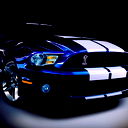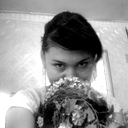Здраствуйте, помогите пожалуйста с пересказом (кратким, предложений 15-20) текста ниже. Буду очень благодарен, спасибо огромное!!!
The human body is obviously separable into the head, the trunk and the limbs. In the head, the brain-case or skull is distinguishable from the face. The trunk includes the chest or thorax, and the abdomen. Of the limbs there are two pairs - the upper, or arms, and the lower, or legs; and the legs and arms again are separable into several parts - the thigh, the leg and the toes in the lower limb and the upper arm, the forearm, the wrist and the fingers in the upper limb.
The whole body, is bilaterally symmetrical. There are special bones in the trunk which are bound (связаны) together by a very strong and tough substance into a long column, which lies nearer the dorsal (or back) than ventral (or front) part of the body The bones are called (называются) the vertebrae. They separate a long narrow canal, the spinal canal, which lies upon the dorsal side.
The spinal canal contains a long white cord - the spinal cord - which is an important part of the nervous system. The diaphragm divides the ventral chamber into two cavities - the thorax and abdomen. The alimentary canal transverses these cavities from one end to the other and pierces the diaphragm. In the abdomen there are also two kidneys, which lie against each side of the vertebral column, the ureters, the bladder, the liver, the pancreas and the spleen. The thorax encloses the heart and two lungs. The latter lie one on each side of the heart.
The dorsal chamber, or cavity of the skull, opens into the spinal canal. It contains the brain, which is continuous with the spinal cord. The brain and the spinal cord together constitute the cerebrospinal system. The ventral chamber, or cavity of the face encloses mouth and pharynx, into which the upper end of the alimentary canal (gullet or oesophagus) opens.
Лингвистика
Знатоки английского, помогите пожалуйста с пересказом: (
1. I'd like to tell you about a human body. 2. There are three main sections in it. 3. They are the head, the trunk and the limbs. 4. In the head you can distingish the face and the scull, or the brain-case. 5. The trunk includes the chest and the abdomen. 6. There are two pairs of limbs: the upper limbs, or arms, and the lower limbs, or legs. 7. Each of 2 legs can be devided into several parts - the thigh, the leg, the foot and the toes. 8. Each of 2 arms can be devided into the forearm, the arm itself, the wrist and the fingers.
9. The whole body is symmetrical. 10. There is the spine in the trunk. 11. It consists of special bones bound together by a very strong and tough substance. 12. The bones are called vertebrae (называются позвонки - артикль не нужен). 13. The spine is closer to the back than to the front part of the body. 14. The spinal cord inside the spinal canal is an important part of the nervous system. 15. The alimentary canal transverses the thorax and the abdomen, which are devided by the diaphragm, through. 16. The other internals are two kidneys the ureters, the bladder, the liver, the pancreas and the spleen. 17. The heart and two lungs are in the chest carvity.
18. The cavity of the skull containing the brain, opens into the spinal canal. 19. The brain and the spinal cord together constitute the cerebrospinal system. 20. The face includes such parts as the mouth and the pharynx, into which the upper end of the alimentary canal opens.
9. The whole body is symmetrical. 10. There is the spine in the trunk. 11. It consists of special bones bound together by a very strong and tough substance. 12. The bones are called vertebrae (называются позвонки - артикль не нужен). 13. The spine is closer to the back than to the front part of the body. 14. The spinal cord inside the spinal canal is an important part of the nervous system. 15. The alimentary canal transverses the thorax and the abdomen, which are devided by the diaphragm, through. 16. The other internals are two kidneys the ureters, the bladder, the liver, the pancreas and the spleen. 17. The heart and two lungs are in the chest carvity.
18. The cavity of the skull containing the brain, opens into the spinal canal. 19. The brain and the spinal cord together constitute the cerebrospinal system. 20. The face includes such parts as the mouth and the pharynx, into which the upper end of the alimentary canal opens.
The human body is like that of any mammal.
Человеческое тело, очевидно, разделена на главы, туловища и конечностей. В голове, мозг случай или череп отличается от лица. Ствол включает в себя грудь или грудь и живот. Из конечностей имеются две пары - верхние или руки, а нижняя, или ноги; а ноги и руки снова отделимы на несколько частей - бедра, ноги и пальцы в нижней конечности и верхней части руки, предплечья, запястья и пальцы в верхней конечности.
Всего тела, двусторонне симметричной. Есть специальные кости в багажнике, которые связаны (связаны) друг с другом очень сильной и жесткой вещества в длинную колонну, которая находится ближе к спинной (или обратно), чем вентральной (или спереди) часть тела Кости называется (называются) позвонков. Они отделяют длинный узкий канал, в спинномозговой канал, который лежит на спинной стороне.
В спинномозговой канал содержит длинный белый шнур - спинной мозг - что важной частью нервной системы. Диафрагма разделяет брюшную камеру на две полости - грудной клетки и брюшной полости. Желудочно-кишечного тракта пробегает эти полости от одного конца до другого и прокалывает мембрану. В брюшной полости имеются также две почки, которые лежат на каждой стороне позвоночника, мочеточников, мочевого пузыря, печени, поджелудочной железы и селезенки. Грудная клетка охватывает сердце и два легких. Последнее лежат по одной на каждой стороне сердца.
Спинной камера или полость черепа, открывается в спинномозговой канал. Он содержит мозг, непрерывная со спинным мозгом. Мозг и спинной мозг вместе составляют спинномозговой системы. Вентральной камеры или полости лица охватывает рта и глотки, в котором открывается верхний конец пищеварительного тракта (пищевода или пищевода).
Всего тела, двусторонне симметричной. Есть специальные кости в багажнике, которые связаны (связаны) друг с другом очень сильной и жесткой вещества в длинную колонну, которая находится ближе к спинной (или обратно), чем вентральной (или спереди) часть тела Кости называется (называются) позвонков. Они отделяют длинный узкий канал, в спинномозговой канал, который лежит на спинной стороне.
В спинномозговой канал содержит длинный белый шнур - спинной мозг - что важной частью нервной системы. Диафрагма разделяет брюшную камеру на две полости - грудной клетки и брюшной полости. Желудочно-кишечного тракта пробегает эти полости от одного конца до другого и прокалывает мембрану. В брюшной полости имеются также две почки, которые лежат на каждой стороне позвоночника, мочеточников, мочевого пузыря, печени, поджелудочной железы и селезенки. Грудная клетка охватывает сердце и два легких. Последнее лежат по одной на каждой стороне сердца.
Спинной камера или полость черепа, открывается в спинномозговой канал. Он содержит мозг, непрерывная со спинным мозгом. Мозг и спинной мозг вместе составляют спинномозговой системы. Вентральной камеры или полости лица охватывает рта и глотки, в котором открывается верхний конец пищеварительного тракта (пищевода или пищевода).
Медет Самархан
нужен пересказ а не перевод: (
Похожие вопросы
- Знатоки английского - помогите пожалуйста
- Знатоки английского, помогите пожалуйста!
- Знатоки английского, помогите, пожалуйста с переводом!
- любители и знатоки английского, помогите пожалуйста! в чем же суть? ))
- Знатоки английского, помогите пожалуйста...
- Знатокам английского, помогите пожалуйста
- Знатоки английского! Помогите, пожалуйста, очень нужен текст этой песни! (+10!)
- Знатоки английского, помогите пожалуйста!! Глагол had to означает "мог"? Правда ли это?
- знатоки английского помогите пожалуйста с заданием, ответы которые я предполагаю что правильные выделены жирным шрифтом
- Ребята, знатоки английского, помогите пожалуйста точно и правильно перевести короткую фразу Заранее спасибо)))



